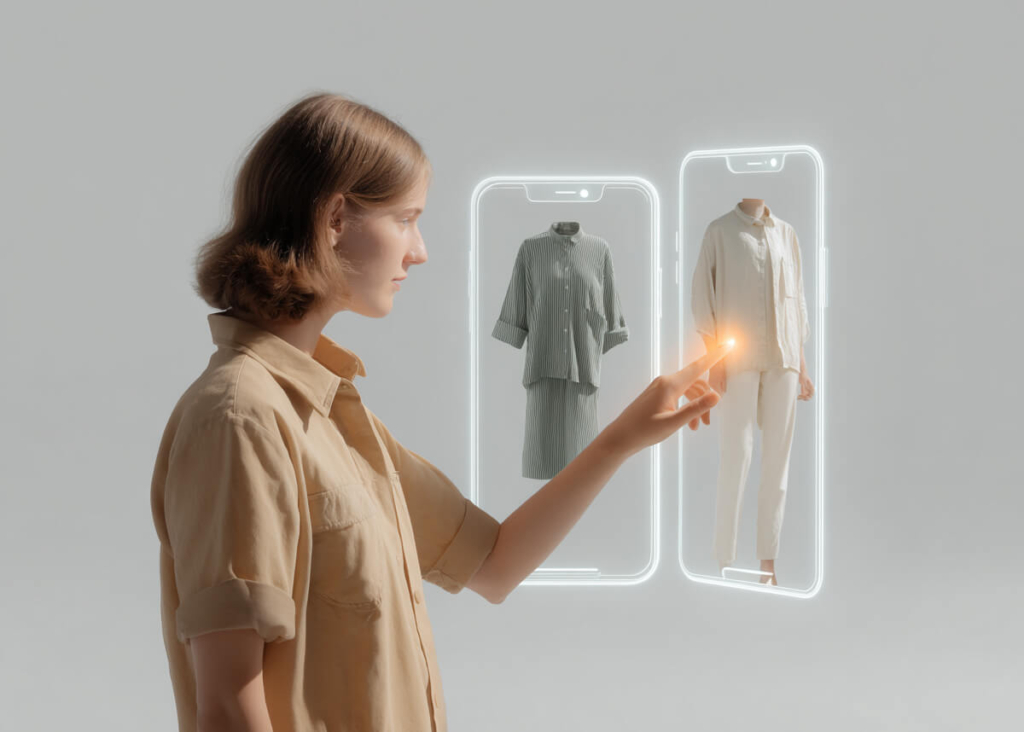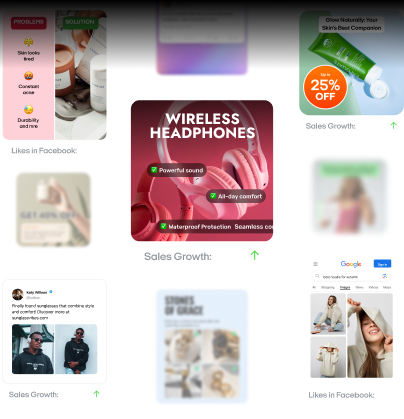How a creative automation platform helps small businesses save time and cut costs in 2025
Discover how a creative automation platform helps small businesses save time and cut costs with smarter, faster content creation.
If your creative team still builds every asset manually, you’re falling behind. As digital campaigns scale across formats and platforms, brands need faster, more consistent creative without growing their design teams.
That’s why marketers are shifting to creative automation platforms — tools that use AI, template-based design, and workflow automation to replace repetitive tasks with smart, scalable production systems. Instead of resizing banners or manually swapping copy, you can now do it all in just a few clicks.
And the time savings aren’t theoretical. According to Zapier, marketers save an average of 25 hours per week using automation tools. That’s time you can reinvest in testing, personalization, and strategy, rather than creative bottlenecks.
In this guide, we’ll break down how creative automation works, explore key features like automated content creation and digital asset management, and tell you how to choose a platform that aligns with your goals, from faster output to brand consistency at scale.
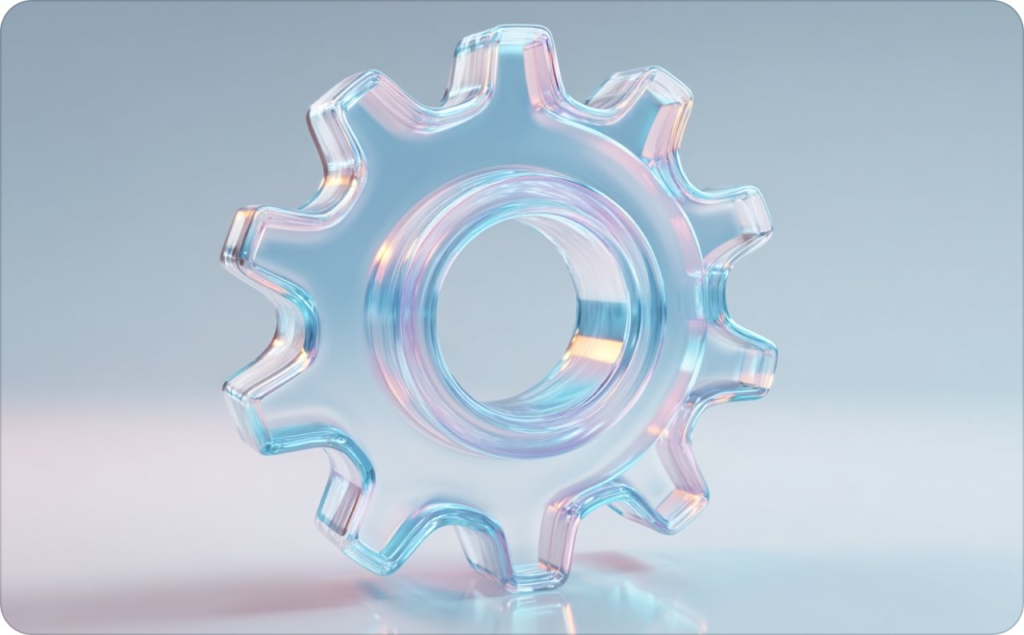
What is a creative automation platform
Feeling lost in a maze of complex marketing jargon and uncertain about how a new tool fits into your workflow is a common experience. Many marketing teams share this struggle, often unsure where new platforms slot into existing processes.
A creative automation platform is software that revolutionizes marketing-asset production, especially digital ad creatives. Instead of manual variations, it employs automated creative production with AI creative tools to rapidly deliver branded content. This explanation of creative automation highlights how marketers and designers gain speed and brand consistency.
At its core, a creative automation platform runs on dynamic creative templates. These aren’t static files — they’re flexible frameworks that let you easily swap images, text, and calls to action through an intuitive drag-and-drop editor.
For example, you can create a single “master” template for a product launch, then generate hundreds of unique versions for different audiences, channels, or campaign goals — all with just a few inputs. This dramatically streamlines your workflow, reduces errors, and helps your team scale without additional resources.
According to McKinsey, generative AI — a core feature in many of these platforms — can improve marketing productivity by 5 to 15% of total spend. That’s time and budget redirected toward high-impact work like testing creative strategies, optimizing messaging, or launching new campaigns faster than ever.
Creative automation differs from generic marketing automation tools. Those handle email nurturing and CRM sequences but lack the visual design power and automated asset generation. Creative automation platforms enhance templates, automate brand-safe content, and accelerate production for high-volume campaigns.
The goal isn’t to replace your creative team, but to amplify it. Automating repetitive design tasks frees talent for strategic ideas and storytelling. You still drive creativity, yet execute at scale with precision and speed, achieving brand consistency across every variation and a workflow that finally meets digital-marketing demands.
Why creative automation matters for marketers
Creative automation delivers stronger ROI, avoid costly mistakes, and faster campaign execution while preserving brand consistency. It eliminates marketing friction like inflated budgets, slow launches, and inconsistent cross-platform messaging.
A creative automation platform reduces manual labor and introduces cost-efficient automation that scales your creative process. For instance, a team using automation can eliminate countless hours of image editing during seasonal campaigns by generating content digitally, cutting production costs by up to 20 times.
That’s not just about savings — it’s about speed and scale. With automated content production and dynamic templates, your team can generate multiple ad variations in minutes. Campaigns that once took days to prepare can now launch in hours. You reach audiences faster, test more ideas, and reduce time-to-market.
Businesses leveraging marketing automation, including creative automation, report productivity increases of more than 20%. Your designers spend less time on repetitive formatting and more time on high-impact creative strategy. Marketers get more control and visibility into performance-driven content delivery.
Automated creative asset optimization locks tone, color, and layout, keeping every ad on-brand at any scale. Deviations disappear, embedding brand consistency in every template. The outcome is smoother campaign management, higher engagement, and improved performance across all channels.
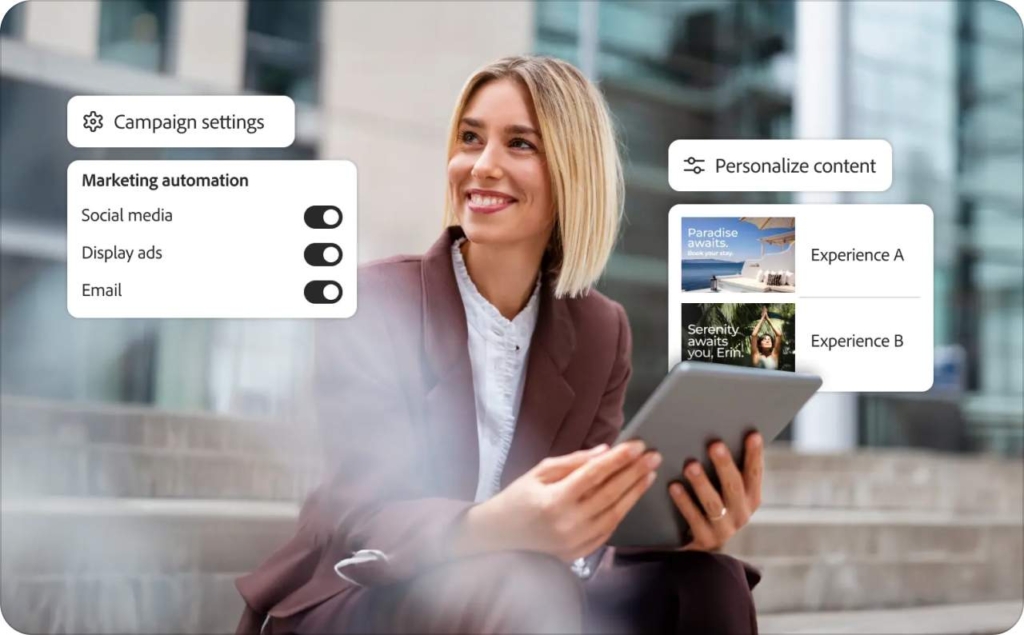
Photo source: Business Adobe
What you can expect from a great creative automation platform
The best platforms aren’t just smart — they’re practical. They help you eliminate complexity, reduce errors, and scale content creation without compromising on brand.
Disconnected tools, steep learning curves, and inconsistent creatives plague many modern marketing teams. A robust creative automation platform solves these problems with intelligent, integrated solutions. Their core features tackle real production problems and equip your brand to scale confidently across channels.
Make design easy with templates
Maintaining brand integrity across multiple campaigns is tough, especially when working manually. If you’ve wasted hours adjusting layouts or fixing visual errors across dozens of ad variations, you know the pain. This is exactly where creative template libraries step in.
These libraries offer dynamic ad templates — reusable frameworks customized via drag-and-drop editors. You can easily swap headlines, visuals, or CTAs without rebuilding the creative from scratch. What makes them powerful is conditional visibility, which lets templates adapt based on audience, format, or placement.
When combined with automated ad creator, these templates save hours of manual work and minimize the risk of design errors. They also ensure your team produces consistent, scalable content without reinventing the wheel for every campaign.
Use smart AI tools to save time and boost results
Manual editing eats into time and talent. Whether it’s cropping product shots or tweaking color palettes, repetitive tasks slow everything down. That’s why top-tier platforms offer AI-driven tools to automate creative production at every level.
These tools make your content smarter. For example, background removal lets you instantly clean up product visuals without lifting a finger. AI color optimization helps choose hues that resonate better with your audience. Predictive design algorithms can help your creatives convert by suggesting layouts based on past performance.
According to recent studies, 68% of marketers using AI tools cite scalability as their primary benefit. The platform simply accelerates execution and removes bottlenecks. You’ll produce high-quality creative faster and more efficiently, with fewer revisions and more time to focus on strategy.
Keep everything connected with smarter campaign tools
Disjointed tools and isolated data make it hard to execute seamless campaigns. If you’re constantly switching platforms or struggling with outdated reports, you’re not operating at full potential. This is where campaign and data integration becomes a game-changer.
Leading automation platforms connect your creative tools with your campaign management systems, ad channels, and CRM platforms like Salesforce. This allows you to build, launch, and manage creative assets across channels from one place.
You also get access to real-time analytics and unified dashboards that surface actionable insights. If a creative variant isn’t converting, you can pivot instantly. With end-to-end connectivity, you’re making data-driven decisions that sharpen your campaigns and deliver better results.
Fix what’s slowing down your marketing and make it work for you
Many marketing teams face constant pressure from high manual workloads that lead to errors and slow campaign execution. Inconsistent branding across channels and the steep learning curve of new software make it difficult to efficiently scale creative output.
A 2024 industry report shows 44% of creative teams still rely on manual production, wasting time and risking errors and off-brand messaging. Implementing a creative automation platform introduces the smart, scalable practices top-performing teams use to eliminate these inefficiencies.
Cut the repetitive work that’s eating up your time
The most pressing concern for many teams is breaking free from the manual grind. Tasks like resizing images for every platform or creating endless ad versions by hand are time drains — and prime candidates for workflow automation.
Start by mapping your current creative process. Look closely at every repetitive step: where delays happen, where errors are common, and where manual involvement slows you down. Copying the same message into multiple ad formats or preparing assets for every ad channel can speed up the work process.
Once you identify those bottlenecks, you can introduce dynamic templates to automate the repetitive tasks. A single “master” template can generate hundreds of tailored versions in seconds, each optimized for different platforms, audiences, or placements. This instantly reduces manual effort without compromising quality.
Don’t try to automate everything overnight. Gradually connect your creative automation platform with existing systems, whether it’s Meta Ads Manager, Google Ads, or your CRM. A phased rollout reduces friction and gives your team time to adapt, minimizing the learning curve and accelerating adoption.
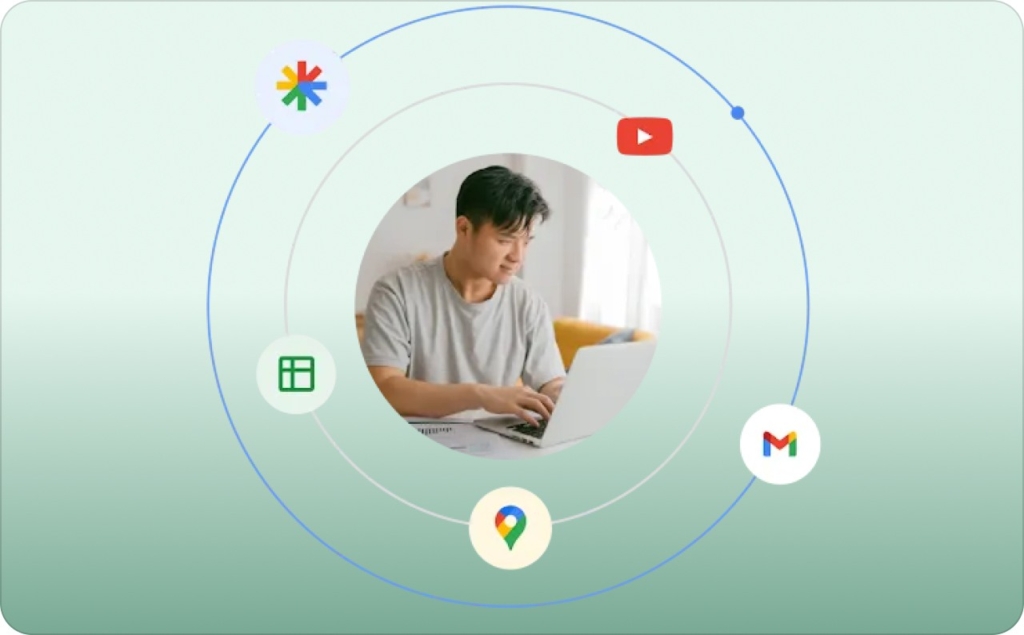
Photo source: Google Ads
Keep your brand looking sharp and on-point everywhere
Manual production might put your brand at risk. When teams build creative assets by hand, mistakes slip in. Logos shift. Fonts change. Messaging strays. Over time, your audience notices the lack of consistency, and trust erodes.
To protect your brand, start by embedding style guidelines directly into your templates. Lock down core elements like fonts, logos, and brand colors. That way, every new asset stays true to your visual identity. This level of automated creative production ensures brand fidelity without the need for constant manual review.
Centralized asset libraries are also important. Storing approved logos, fonts, and visuals in a single place keeps everyone on the same page and eliminates off-brand uploads or outdated designs. Every team member works from the same set of assets, resulting in consistent output across every campaign.
Even better, creative automation makes A/B testing frictionless. Instead of designing variants manually, you can instantly generate dozens of creative versions with small tweaks — different CTAs, headlines, or visuals — using the platform’s built-in automation.
By applying these best practices, you’ll not only reduce manual workload but also improve operational efficiency, maintain brand consistency, and scale campaigns faster. Your creative automation platform becomes a central engine for continuous workflow optimization and high-performing campaign management.
What you’re really paying for and why it’s worth it
Navigating creative automation pricing can feel overwhelming. Hidden costs, unclear feature tiers, and unpredictable usage fees often make it difficult to compare platforms side by side. Learn about the most common pricing models to align your budget with real value.
How to pick the pricing plan that fits your business
Most creative automation platforms follow one of four common pricing structures. Knowing how each model works will help you identify the best fit for your team.
Freemium models give you access to a basic feature set at no cost, which is ideal for small teams testing functionality or experimenting with templates. These free plans typically include platform branding and limit access to advanced tools.
Tiered subscriptions — Basic, Pro, and Enterprise — are the standard. Pricing scales by user seats, feature sets, or creatives rendered. Budget-friendly lower tiers often omit essentials like AI-powered design tools or data integration, while higher tiers deliver full scalability and access at a steeper cost.
Some platforms rely on usage-based pricing, charging per render or volume of creative assets produced. This can work well for irregular users, but costs can spike quickly with higher production demands, making budgeting harder for larger campaigns.
For large organizations, custom enterprise solutions offer tailored pricing and dedicated support. These plans often include premium integrations, security features, and flexible workflows. However, they require direct negotiations and are best suited for teams with complex creative and campaign management needs.
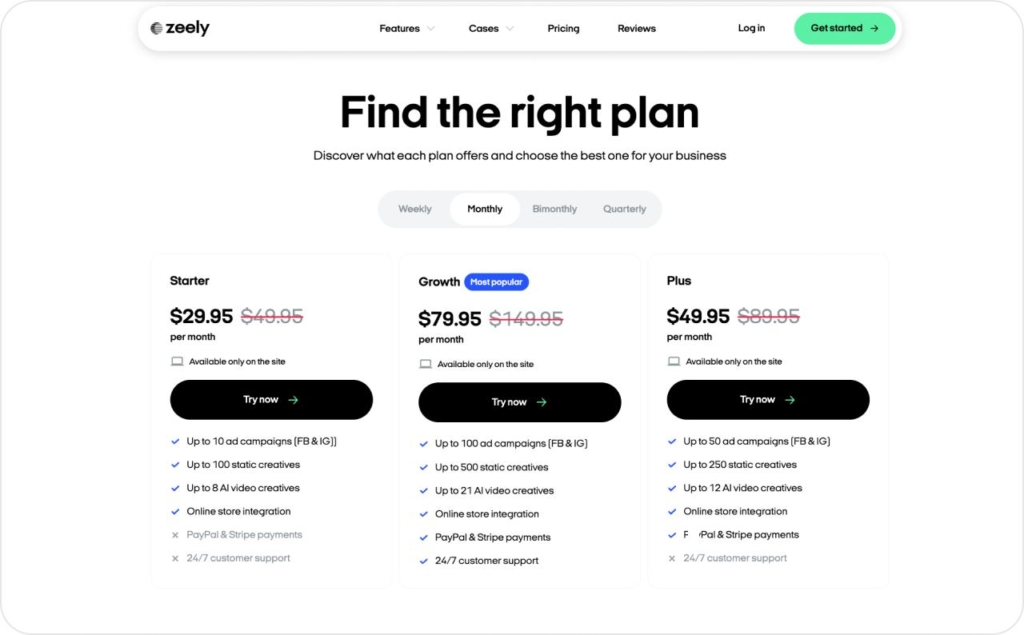
Pros and cons of creative automation platforms
Every platform offers its own blend of advantages and trade-offs. Understanding the pros and cons of creative automation helps you evaluate which option will deliver the strongest return for your business.
Pros:
- Cost savings through reduced manual work and agency fees
- High scalability for generating large volumes of creatives
- Improved brand consistency with locked templates and shared assets
- Faster time-to-market for campaigns
- Enhanced performance via automated testing and creative optimization
Cons:
- Learning curve when adopting advanced tools
- Integration complexity with existing tech stacks
- Creative repetition risks if templates are not customized well
- Higher subscription costs may be limiting for small businesses
Among the biggest advantages is cost reduction. By automating routine tasks, you reduce the need for external agencies and reclaim hours typically lost to manual design. This directly improves your ROI metrics while freeing your team to focus on strategy.
Scalability is another standout gain. You can produce thousands of branded creative assets for different audiences, platforms, or placements — without recreating everything from scratch. That means faster launches and broader reach.
Brand consistency also improves dramatically. With centralized asset libraries and dynamic templates, your visuals remain on-brand across every ad variation, regardless of who created them. Internal reviews and version control issues no longer slow down campaigns.
Performance is enhanced through rapid testing and data-driven creative optimization. With the ability to quickly test and tweak variations, you’ll drive better engagement and higher conversions over time.
However, there are a few problems to note. First, most platforms come with an initial learning curve. It takes time to master the tools and workflows, especially if your team isn’t familiar with design systems or creative automation platforms.
Second, integration with your existing tech stack — whether CRM, CMS, or ad platforms — can require technical support or IT resources. Some businesses may also find themselves leaning too heavily on templates, leading to creatives that feel repetitive if not properly customized.
Lastly, although automation reduces long-term costs, the subscription price, especially at the higher tiers, may be too high for smaller companies with limited budgets.
Find the right plan for your business without overpaying
Choose a creative automation platform that matches your team’s size, workflow, and campaign complexity. Startups and small businesses profit from freemium or entry-level plans with intuitive dashboards and robust template libraries — ideal for low-risk, quick-turn social-media ads and rapid content testing.
For mid-sized businesses or agencies, a mid-tier subscription is often the best. Prioritize tools with AI-powered creative features, multi-account management, and smooth data integration for audience targeting. Automated ad creation and cross-platform publishing can help you manage larger volumes without adding headcount.
Enterprise teams should look for platforms with customizable enterprise packages. Focus on deep API access, full campaign management workflows, advanced security, and scalability. These solutions are designed for complex production pipelines and high-volume campaign execution.
By evaluating your needs against these pricing models and capabilities, you can choose a platform that balances cost with performance and unlocks the true potential of your creative workflow.
How to get the most out of creative automation
Creative automation streamlines ad production, lifts ROI, and keeps every asset on-brand, turning a once-manual bottleneck into a long-term growth engine. With the right platform, you create, test, and optimize at speeds that outpace today’s digital demands.
The process of selecting a creative automation platform begins with identifying your most critical marketing blind spots. Whether the focus is on scaling personalized ad content, lowering production costs, or protecting brand consistency across formats, the ideal solution should be purpose-built to meet those needs.
Platforms now merge live performance data with predictive design, letting creatives adapt mid-campaign and slashing testing-to-optimization time. Next, deeper AI integration will convert raw product feeds into hyper-personalized ads, while collaborative layers unite design, media, and analytics in a workspace.
Your immediate roadmap is simple: run a pilot on a high-volume campaign, train designers and marketers together, and track ROI gains each quarter. Use those insights to refine templates, expand automation to new channels, and keep your creative strategy aligned with evolving goals.
Early adopters who iterate often and scale strategically will lead the next wave of high-performing marketing teams, so explore a demo or free trial and put your brand at the forefront of creative automation.
Also recommended


